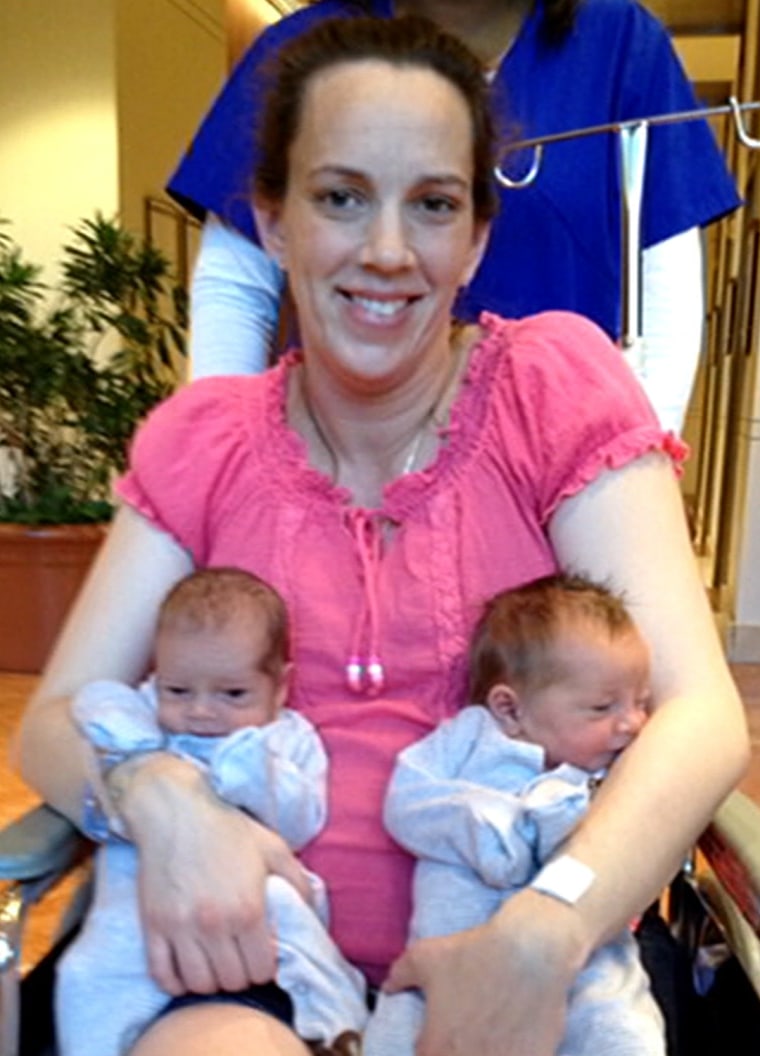Lana Kuykendall, the South Carolina woman struck by flesh eating bacteria shortly after delivering twins, appears to be well on the road to recovery.
"It's been a long road, a lot of which I don't remember, but we're recovering and that's what matters," Kuykendall told Willie Geist in an exclusive interview on TODAY.
She's moved from a hospital to a rehabilitation facility, and she could go home as early as this week. Last month, she was able to hold her babies for the first time since being infected, and she's now able to walk. Her friends and husband Darren say the babies have been a huge motivator in her fast recovery.

"She's a fighter. She works hard every day and she pushes through it," her physical therapist, Lindsay Swift, tells TODAY.
After nearly 20 surgical procedures, the 36-year-old mom’s condition was upgraded to “good” by doctors at Greenville Memorial Hospital in late June.
"It was touch-and go each and every day, and it was stressful," said Darren, a firefighter. "She's very strong. Her faith in God has has really pulled her through -- pulled all of us through. I knew that she was a fighter from the word go, and I love her with all my heart. She's the best thing that ever happened to me."
On May 11, just days after her babies were born, Kuykendall noticed a dark spot on the back of her left leg. Thinking it might be a blood clot, Kuykendall, who is a paramedic, checked herself in to the hospital. By the time Kuykendall went in for surgery, the infection had spread far beyond the original spot.
“Around 11:30 it was the size of her palm,” Kuykendall’s friend, Kayla Moon, told TODAY. “By the time she went in to surgery and they thought they knew what it was, it had consumed practically her whole leg.”
As it turns out, Kuykendall’s quick trip to the hospital may have made all the difference. The South Carolina woman hasn’t needed any amputations.
Another woman being treated for necrotizing fasciitis, college student Aimee Copeland, 24, is making progress in a rehabilitation center after having her left leg, right foot and both hands amputated. She developed the infection after she suffered a deep cut May 1 when she fell from a broken zip-line along Georgia's Tallapoosa River. Doctors blamed Copeland's infection on Aeromonas hydrophila bacteria, which are found in fresh or brackish water and may have entered the wound when she fell into the river.
Experts say that the only protection against damage from necrotizing fasciitis, the clinical name for flesh-dissolving infections, is vigilance. The sooner surgeons can remove infected tissue, the less likely amputations will be needed.
While patients also receive antibiotics as part of their treatment, the drugs can’t reach the fascia, the tissue destroyed in this type of infection.
The fascia, a thin layer of tissue that lies between the muscles, is what allows the muscles to slide smoothly over one another. The reason antibiotics and white blood cells - the body’s own defense system – can’t reach the fascia is that they are carried by the blood and the fascia don’t have a blood supply.
The most frightening thing about necrotizing fasciitis is that it can spread so quickly along the "super highway" created by the long stretches of fascia in the body.
The good thing is that necrotizing fasciitis is fairly uncommon because you need to have a deep wound for bacteria to get to the fascia. Any wound that suddenly becomes red and puffy – and more painful – should be seen by a doctor, experts caution.
For more information on Lana's story, visit www.faithhopelana.com.